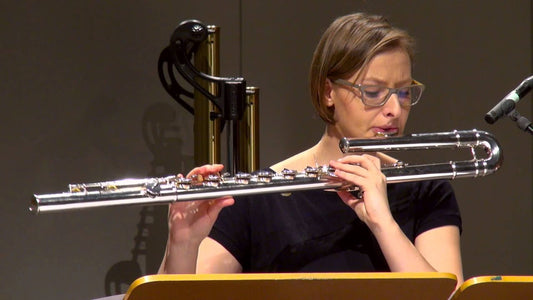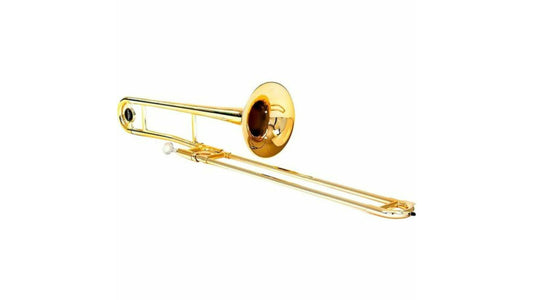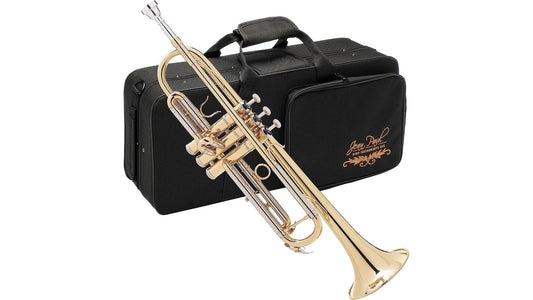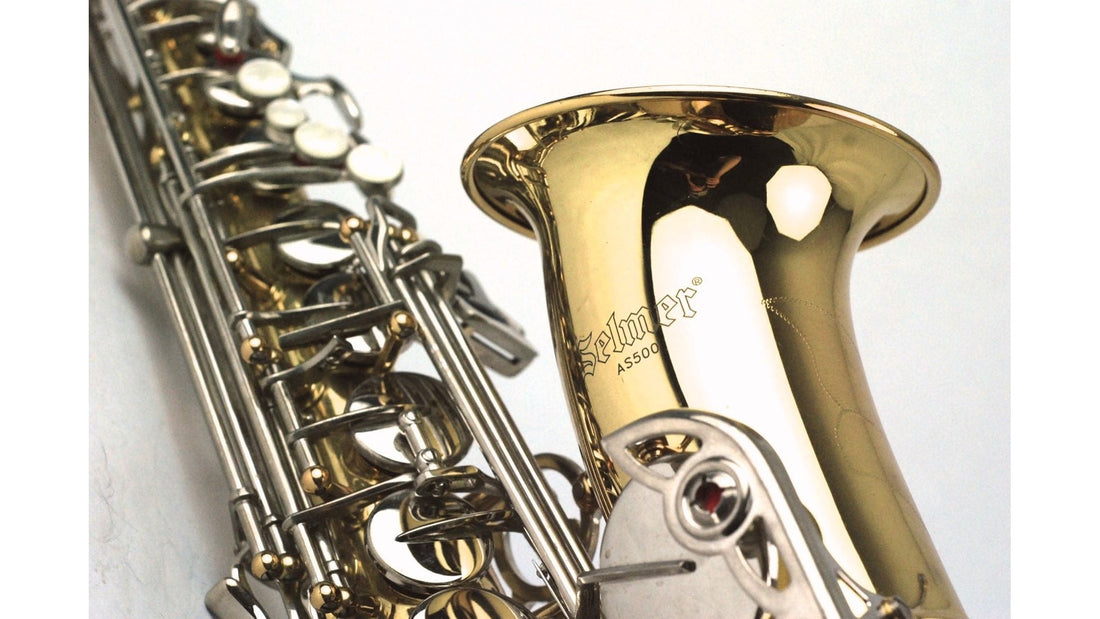
Selmer Paris: Lịch Sử Hãng Kèn Saxophone Bậc Nhất
Khi nói đến lịch sử của nhạc jazz, saxophone đã đóng một vai trò quan trọng trong nhiều phong cách và phong trào phổ biến nhất.
Nhưng tìm hiểu sâu hơn một chút và bạn sẽ thấy rằng một nhà sản xuất – Selmer – đã cung cấp kèn họ sản xuất cho những người chơi giỏi nhất. Hãng kèn này thậm chí đóng vai trò rất lớn trong quá trình phát triển của nhạc jazz.
Trong bài viết này, chúng ta đang tìm hiểu lịch sử của saxophone Selmer và vai trò của chúng trong sự phát triển của nhạc jazz…
Được thành lập vào năm 1885, Henri Selmer Paris có lịch sử lâu đời về sản xuất các nhạc cụ bằng đồng và kèn gỗ chất lượng cao, nhưng có lẽ đóng góp quan trọng nhất của hãng cho thế giới nhạc jazz là những chiếc saxophone Selmer huyền thoại.
Danh sách các nhạc sĩ nhạc jazz yêu thích saxophone Selmer trong những năm qua khá toàn diện.
Từ những người vĩ đại ban đầu như Sonny Rollins và John Coltrane cho đến những ngôi sao hiện đại như Branford Marsalis và Michael Brecker, gần như không thể kể tên danh sách những album nhạc jazz hay nhất mà không bắt gặp một loạt những chiếc kèn này.
Tất nhiên, trong cộng đồng saxophone, Selmer Mark VI là “chén thánh” đối với hầu hết người chơi.
Được sản xuất chỉ trong 20 năm từ giữa những năm 50 đến giữa những năm 70, nó trùng hợp với một trong những thời kỳ phát triển màu mỡ nhất trong lịch sử nhạc jazz (hard bop, cool jazz, avant garde, modal…)
Tuy nhiên, bất chấp điều đó, Selmer đã chứng minh được chất lượng của họ với những cây saxophone đáng kinh ngạc khác cả trước và sau kỷ nguyên vàng của ngành sản xuất saxophone MKVI.
Không ai có thể phủ nhận Selmer đứng vị trí thứ nhất trong danh sách những thương hiệu saxophone tốt nhất trên thế giới.
Chúng ta sẽ nói qua một số cây saxophone Selmer nổi tiếng nhất – từ Modele 22 đầu tiên vào năm 1922 đến Reference 54 và Reference 36 được đánh giá cao hiện nay – và xem xét một số nhạc sĩ chủ chốt và các album chính mà những cây kèn này góp mặt.
Modele 22 – sự ra đời của Selmer Saxophone
Trong khi Henri Selmer Paris đã tạo dựng được danh tiếng của mình với tư cách là một nhà sản xuất bộ gió bằng gỗ từ cuối thế kỷ 19, và thậm chí còn sản xuất sax theo bản thiết kế cổ điển của Adolphe Sax, Paris đã ghi dấu ấn nghiêm túc đầu tiên trên thế giới saxophone vào năm 1922 với sự ra mắt của Selmer Modele 22.
Henri và Maurice Lefevre đã dành 2 năm trước đó để phát triển các phương pháp sản xuất và chế tạo sax tại một nhà máy mới ở thị trấn Mantes của Pháp và đến năm 1922, chiếc saxophone mới đã được tung ra thị trường.
Theo Selmer, “kỹ thuật mới này đã đơn giản hóa quá trình sản xuất, loại bỏ các vấn đề về mối hàn và cho phép tiêu chuẩn hóa sản xuất tốt hơn.”
Mặc dù công việc thiết kế và thiết kế phím còn xa so với các mẫu sau này - và việc điều chỉnh thường khó kiểm soát - nhưng Modele 22 đã đặt nền móng và gợi ý về sự thành công trong tương lai của Selmer với tư cách là nhà sản xuất những chiếc saxophone hay nhất thế giới và khiến chúng trở nên khác biệt so với các đối tác Mỹ của họ vào thời điểm đó.
Trong khi thể loại nhạc jazz vẫn còn sơ khai khi ra mắt Modele 22, phiên bản C Melody của nó (được thực hiện cùng với phần còn lại của dòng saxophone sau thành công của phiên bản alto) đã trở nên phổ biến với các nhạc sĩ nhạc jazz thời đó.
Đáng chú ý nhất, nhạc sĩ và trưởng ban nhạc người Mỹ Frankie Trumbauer đã làm cho loại saxophone này trở nên nổi tiếng và có lẽ do đó, Coleman Hawkins vĩ đại cũng bắt đầu chơi saxophone C Melody.
Super “Cigar Cutter” và 1930s Super Sax
Năm 1929, với danh tiếng quốc tế mới nổi với tư cách là nhà sản xuất saxophone, Selmer đã mua công ty Adolphe Sax & Co, trao cho công ty độc quyền đối với di sản chế tạo saxophone đó.
Trong thời gian này, hãngđã tung ra dòng sản phẩm Selmer Super Sax, được phân phối trên nhiều mẫu khác nhau. Có lẽ nổi tiếng nhất là Cigar Cutter. Được người Mỹ đặt tên do thiết kế phím quãng tám, nó cũng bao gồm một số nâng cấp và cải tiến thiết kế khác trên các mẫu trước đó.
Xét về các nhạc sĩ nhạc jazz thời đó, Zoot Sims được cho là đã chơi Cigar Cutter, cũng như Coleman Hawkins trong một số bản thu âm trước đó của ông.
Selmer (Super) Balanced Action
Nếu bạn đang tìm cách xác định thời điểm chiếc saxophone 'hiện đại' mà chúng ta biết ngày nay được chế tạo, thì cách tốt nhất của bạn có lẽ là vào giữa/cuối những năm 1930 với sự ra mắt của chiếc saxophone Balanced Action của Selmer.
Theo công ty, nguồn gốc của cái tên Balanced Action xuất phát từ công việc chính cân bằng và phân bổ trọng lượng. “Nguyên mẫu cơ bản của kèn saxophone hiện đại và phần lớn những thay đổi tích hợp trong nó vẫn được giữ nguyên cho đến ngày nay. Công việc chính được thiết kế lại hoàn toàn. Các phím B và Bb thấp được di chuyển sang bên phải của chuông, cho phép thao tác với phím dễ dàng hơn.”
Nhìn chung, chiếc kèn thu được dễ sử dụng hơn; nhẹ hơn, nhanh hơn và thoải mái hơn – tất cả đều giúp người chơi giải phóng khả năng biểu diễn với kỹ thuật mở rộng và tính linh hoạt cao hơn.
Trong khi Balanced Action đặt nền móng, thì Super Action (hay Super ‘Balanced’ Action như nó được biết đến) - được ra mắt vào năm 1948 - đã cải tiến mọi thứ xa hơn.
Đặc biệt, làm việc trên lỗ khoan đã cải thiện ngữ điệu và âm thanh tổng thể.
Ben Webster nhanh chóng nâng cấp lên Selmer Balanced Action khi chúng xuất hiện trên thị trường và , John Coltrane đã chơi một bản Selmer Super Balanced Action nổi tiếng làm nên sự nghiệp của ông.
Những người chơi saxophone jazz hiện đại như Joshua Redman, Mark Turner và Seamus Blake cũng là những người hâm mộ cây kèn tuyệt vời này.
Selmer Mark VI – Huyền Thoại Saxophone
Nếu bạn biết bất cứ điều gì về Selmer, gần như chắc chắn bạn đã nghe nói về Mark VI. Ra mắt vào năm 1954, saxophone Selmer Mark VI đã đi vào thế giới như một sản phẩm hay nhất từng được sản xuất.
Nếu Balanced Action trong những năm trước đã mở đường cho thiết kế saxophone hiện đại, thì MK VI đã tinh chỉnh nhiều tính năng và ghép nối nó với âm thanh kỳ diệu đó.
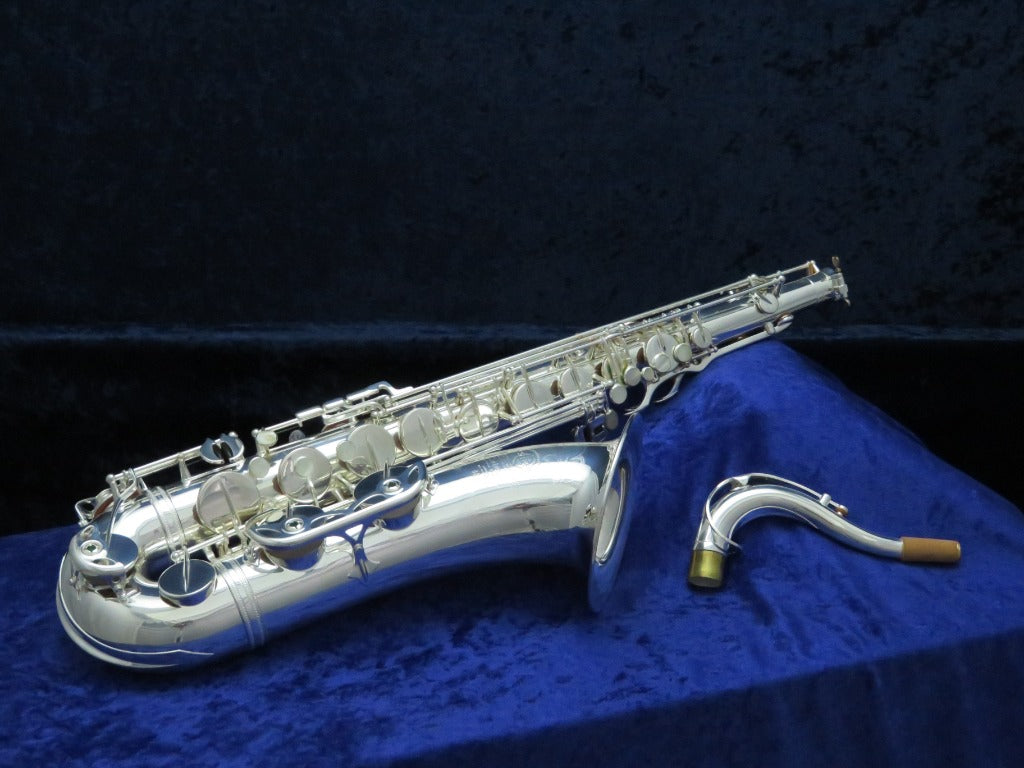
SELMER MARK VI SILVER TENOR SAXOPHONE 1957 SERIAL #M71245
Chiếc kèn saxophone trị giá 40.000 USD
Lấy tên từ thực tế rằng nó là mẫu thứ 6 kể từ Modele 22 ban đầu, những chiếc kèn được săn lùng đặc biệt từ thời đại này (chúng đã ngừng sản xuất chỉ sau 20 năm) có thể có giá trị kinh ngạc.
Nhận xét với Pitchfork, chủ cửa hàng saxophone ở New York, Roberto Romeo cho biết ông hiếm khi bán một alto Mark VI với giá dưới 8.000 đô la (những chiếc alto khác có thể rẻ hơn) – và ông đã từng bán một chiếc chưa bao giờ được chơi với giá 40.000 đô la!
Người ta ước tính rằng Selmer đã sản xuất từ 150.000 đến 200.000 chiếc Mark VI, hầu hết trong số đó được cho là còn tồn tại đến ngày nay.
Tại sao Selmer Mark VI là tốt nhất?
Đây là một câu hỏi hay, và một câu hỏi không có câu trả lời đơn giản!
Tất nhiên, vào thời điểm đó, những tiến bộ kỹ thuật đã khiến nhiều nhạc sĩ nhạc jazz trở nên dễ dàng. Nhưng ngay cả khi các phương pháp sản xuất hiện đại đã phát triển, nó vẫn giữ được vị thế huyền thoại này.
Kết quả một phần đến từ sự kết hợp của một vài tiến bộ kỹ thuật. Hỗn hợp cho hợp kim đồng thau (một bí mật Selmer được bảo vệ chặt chẽ), những người thực sự làm việc này trong nhà máy, các vật liệu có sẵn vào thời điểm đó.
Nhưng một số người cũng có cảm giác rằng thời điểm có vai trò nhất định.
Mark VI đã được sản xuất và sử dụng trong thời kỳ hoàng kim của nhạc jazz vào những năm 1950 và 1960. Rất nhiều album hay nhất trong lịch sử nhạc jazz đã được thu âm trong thời kỳ này và vì vậy Mark VI, được chơi trên rất nhiều album, cũng đã được ghi vào lịch sử nhạc jazz.
Nếu các bản độc tấu của John Coltrane, Wayne Shorter và Sonny Rollins là một phần quan trọng trong quá trình học nhạc jazz của bạn, thì tại sao bạn không chớp lấy cơ hội chơi cùng một kiểu sax mà họ đã làm?!
Ai đã chơi saxophone Selmer Mark VI?
Chà, danh sách này khá toàn diện, nếu bạn nhìn vào những nghệ sĩ saxophone tenor vĩ đại từ giữa năm 1950 trở đi!
John Coltrane là một trong số nhiều người chơi đã chuyển từ Super “Balanced” Action của Selmer sang Mark VI ngay khi chúng xuất hiện trên thị trường.
Sonny Rollins dường như đã nhặt Mark VI của mình từ một cửa hàng saxophone ở New York vào những năm 1970 và đã chơi nó kể từ đó.
Và, theo chính Selmer, “một chiếc alto sản xuất hạn chế với A thấp cũng xuất hiện dưới nhãn hiệu “Mark VI”, có những người hâm mộ như Ornette Coleman.”
Gần đây hơn, người khổng lồ saxophone Michael Brecker đã nâng cấp lên Mark VI giữa chừng trong sự nghiệp của mình và ngày nay, hơn 40 năm sau khi những chiếc Mark VI cuối cùng được sản xuất, có những người chơi hiện đại như Kamasi Washington, những người đã lên tiếng ủng hộ Mark VI.
Selmer Super Action 80
Vào đầu những năm 1980, Selmer tung ra chiếc saxophone đầu tiên trong số 3 chiếc kèn saxophone Super Action 80 (Sê-ri I, Sê-ri II và Sê-ri III vào những năm 1990)
Nhạc cụ này nối tiếp sự ra mắt ít phổ biến hơn của Mark VII và nhằm mục đích tập hợp những phát triển công nghệ từ thử nghiệm đó, với công thái học và cảm giác của Mark VI.
Vẫn được sản xuất cho đến ngày nay, đây là lựa chọn phổ biến của nhiều người chơi kèn muốn ghép nối lịch sử của saxophone Selmer trong nhạc jazz, với một chiếc kèn hiện đại hơn và dễ bảo trì hơn.
Mặc dù mẫu này có sẵn ở tất cả các kích cỡ phổ biến của saxophone (nguyên mẫu đầu tiên thực sự là một baritone), nhưng đây là phiên bản alto được nổi tiếng và sử dụng nhiều nhất.
Trên thực tế, theo Selmer, đó là “chắc chắn đây là cây kèn alto saxophone chuyên nghiệp nổi tiếng nhất thế giới .”
Tất nhiên, với tư cách là một chiếc saxophone được ra mắt vào những năm 1980, nó không có cùng danh sách các huyền thoại nhạc jazz như các mẫu trước đó, nhưng thực sự có rất nhiều nghệ sĩ vĩ đại hiện đại chơi loại này, bao gồm nghệ sĩ saxophone jazz người Mozambique Moreira Chonguiça (“một trong những người biểu diễn xuất sắc nhất của nhạc jazz sáng tạo và nguyên bản từ Châu Phi”).
Selmer Reference 54 & Reference 36
Năm 2000, Selmer công bố ra mắt 2 mẫu kèn saxophone mới lấy cảm hứng từ hai chiếc kèn cổ điển nhất của họ.
Đúng như tên gọi, Selmer Reference 54 là một cây kèn saxophone hiện đại được lấy cảm hứng từ chiếc kèn Mark VI nguyên bản năm 1954, trong khi Selmer Reference 36 gợi nhớ đến bộ máy Balanced Action của những năm 1930.
Truyền thuyết về hai chiếc kèn saxophone đó (đặc biệt là MKVI) vẫn không hề giảm đi trong nhiều năm kể từ khi ngừng sản xuất, vì vậy, có vẻ hợp lý khi Selmer cố gắng lấy lại một số điều kỳ diệu đó, bằng một cách tiếp cận hiện đại hơn (và có lẽ là phù hợp với giai điệu)!
Giống như MKVI ban đầu, Reference 54 có âm thanh đầy đủ, phong phú và mượt mà về mặt công thái học. Nó thậm chí còn được trải qua một quá trình oxy hóa để mang lại cho nó vẻ ngoài cổ điển.
Theo đánh giá của Tom Christensen cho tạp chí Jazztimes, nó “nặng hơn đáng kể so với Mark VI. Điều này có thể là do công việc phím mở rộng hơn trên kèn mới bao gồm các giá đỡ bổ sung cho các thanh dài hơn và kim loại dày hơn cho các phím. Các phím trên thân kèn cho các ngón út trên cả hai tay có cảm giác rất gần với Mark VI.”
Tương tự, Reference 36 sử dụng các yếu tố của đối tác 80 năm tuổi của nó và truyền vào chúng độ chính xác và hành động mà quá trình sản xuất của Thế kỷ 21 cho phép.
Phản hồi đối với những chiếc kèn này phần lớn là tích cực và trong khi sẽ luôn có những nghệ sĩ saxophone muốn có 'The Real McCoy' từ nhiều năm trước, thì nhiều người khác đã sử dụng những chiếc kèn lai hiện đại này.
Những người chơi hiện đại tán thành những chiếc kèn này cho Selmer bao gồm Jean Toussaint (người khởi nghiệp với Art Blakey và Jazz messengers vào những năm 80) và Chico Freeman.
Cảm ơn bạn đã tham gia cùng chúng tôi về lịch sử ngắn ngủi đó thông qua truyền thuyết về thương hiệu saxophone Selmer !
Nếu bạn chưa thử, nó rất được khuyến khích! Nếu bạn có – và muốn chia sẻ phản hồi – vui lòng sử dụng phần nhận xét.
Nếu bạn đã sẵn sàng tìm hiểu thêm một số nội dung liên quan đến saxophone – cả về nhạc cụ và người chơi – bạn có thể tìm thấy tất cả các bài viết về saxophone của chúng tôi.


